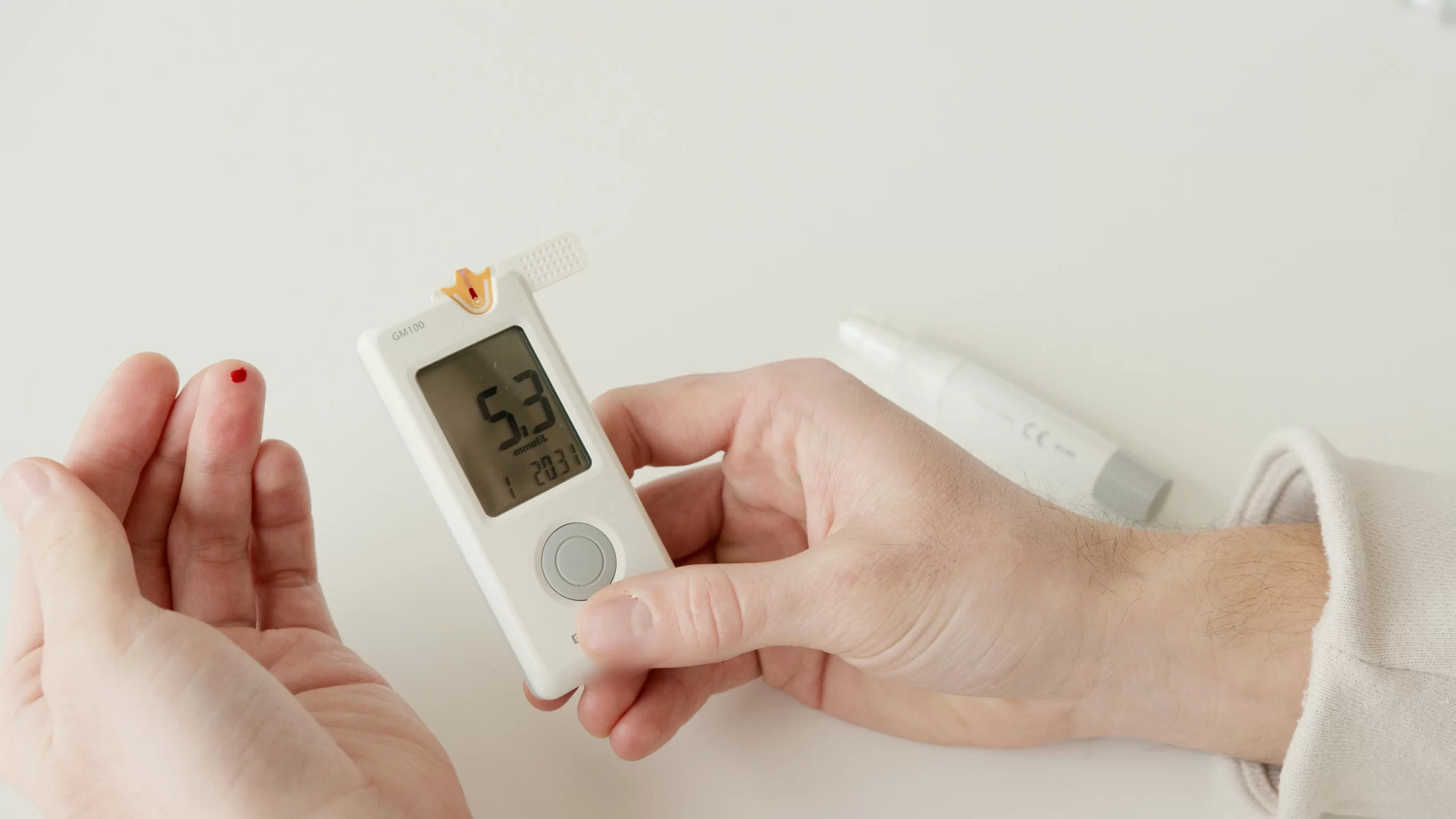Diabetes significantly impacts cardiac health, increasing the risk of various cardiovascular diseases (CVDs) and related complications. Here’s how diabetes affects the heart:
Mechanisms Linking Diabetes and Cardiac Health
Damage to Blood Vessels and Nerves:
- Diabetes cause endothelial (inner layer of blood vessels) dysfunction and oxidative stress (by generating oxygen reactive species). This damage leads to reduced elasticity of arteries, increasing the risk of atherosclerosis (hardening of arteries).
Accelerated Atherosclerosis:
- Diabetes promotes the buildup of cholesterol plaques in arteries (atherosclerosis). These plaques narrow the arteries, reducing blood flow to the heart and increasing the likelihood of heart attacks, strokes, and peripheral arterial disease.
Specific Cardiac Conditions Associated with Diabetes
- Coronary Artery Disease (CAD):
- CAD is the most common form of heart disease in people with diabetes. It occurs due to plaque buildup in coronary arteries, leading to heart attack.
- Heart Failure:
- Diabetes increases the risk of heart failure by making the heart muscle stiffer and impairing its ability to pump blood effectively.
- Silent Heart Attacks:
- Nerve damage caused by diabetes can mask symptoms like chest pain, leading to “silent” heart attacks that are often detected only at advanced stages.
- Stroke:
- Reduced blood flow to the brain due to blocked or narrowed arteries increases the risk of stroke in individuals with diabetes.
- Peripheral Arterial Disease (PAD):
- Blockages in arteries supplying blood to the legs and feet are common in people with diabetes.
Contributing Factors
People with diabetes often have additional risk factors that increases their likelihood of developing heart disease:
- High Blood Pressure: Damages artery walls, increasing cardiovascular risks.
- Abnormal Cholesterol Levels: High LDL (“bad”) cholesterol, low HDL (“good”) cholesterol, and high triglycerides are common in diabetic patients.
- Obesity: Frequently coexists with diabetes, further straining cardiovascular health.
- Lifestyle Factors: Smoking, poor diet, lack of exercise, and excessive alcohol consumption exacerbate risks.
Prevention and Management
Controlling diabetes involves maintaining blood sugar levels within target ranges through a combination of lifestyle changes, monitoring, and medication. Here’s a practical guide:
Target Blood Sugar Ranges
The recommended blood sugar levels vary depending on individual factors such as age, type of diabetes, and health conditions:
- Fasting (before meals): 80–130 mg/dL for people with diabetes.
- Post-meal (2 hours after eating): Less than 180 mg/dL for adults with diabetes.
- Without diabetes: Below 99 mg/dL fasting and below 140 mg/dL post-meal.
Practical Guide to Diabetes Management
1. Diet
A balanced diet is crucial for controlling blood sugar:
- Choose healthier carbohydrates: Opt for whole grains, fruits, vegetables, legumes, and unsweetened dairy products. Avoid refined carbs like white bread and sugary cereals.
- Eat more fiber: High-fiber foods slow sugar absorption and help regulate blood sugar levels. Include whole fruits, vegetables, beans, and whole grains.
- Limit salt intake: Excess salt can increase blood pressure, compounding risks for heart disease.
- Choose healthy fats: Incorporate monounsaturated fats like olive oil, nuts, seeds, avocados, and fatty fish.
2. Physical Activity
Regular exercise improves insulin sensitivity and helps lower blood sugar:
- Engage in activities like brisk walking, cycling, swimming, or dancing for at least 150 minutes per week.
3. Monitoring Blood Sugar
Frequent monitoring helps ensure levels stay within target ranges:
- Use a glucometer to track blood sugar before meals and after eating. Target levels of sugar is as mentioned earlier, is crucial to prevent complications of diabetes.
- Adjust diet or medication based on readings in consultation with your healthcare provider.
4. Medication
Take prescribed medications or insulin as directed by your doctor:
- Medication may include oral drugs like metformin or injectable insulin, depending on the type of diabetes.
- Keep an eye for the symptoms of hypoglycemia, which is often more serious and harmful.
5. Stress Management
Stress can raise blood sugar levels:
- Practice relaxation techniques like meditation or yoga.
- Stay physically active and maintain social connections to reduce stress.
6. Adequate Sleep
Poor sleep disrupts blood sugar regulation:
- Aim for 7–8 hours of sleep per night.
- Create a calming bedtime routine and avoid screens (mobile and TV) before sleep.
7. Hydration
Drink plenty of water(2 to 3 L/ daily) to help flush out excess sugar from the body. Avoid sugary beverages that can spike blood sugar levels.
8. Quit smoking and Limit alcohol
Smoking and alcohol increases the free radical injury, organ damage and accelerate the harmful effects of diabetes.
9. Regular Medical Check-Ups
Work with your healthcare provider to adjust treatment plans as needed:
- Regular FBS, PPBS, and HbA1C tests measure average blood sugar levels over 3 months.
- Consult a dietitian for personalized dietary advice for diabetic diet.
By following these steps consistently, most individuals can effectively manage their diabetes and reduce the risk of complications. Control blood sugar levels through medication, diet, and exercise and manage coexisting conditions like hypertension and high cholesterol.
Citations:
- https://newsnetwork.mayoclinic.org/discussion/mayo-clinic-q-and-a-how-does-diabetes-affect-the-heart/
- https://www.cdc.gov/diabetes/diabetes-complications/diabetes-and-your-heart.html
- https://www.heartfoundation.org.au/your-heart/diabetes-and-heart-disease
- https://pmc.ncbi.nlm.nih.gov/articles/PMC3603160/
- https://www.diabetes.org.uk/living-with-diabetes/eating/10-ways-to-eat-well-with-diabetes
- https://www.cdc.gov/diabetes/living-with/index.html
- https://www.gradyhealth.org/blog/8-ways-to-lower-your-blood-sugar/
- https://www.healthline.com/health/diabetes/normal-blood-sugar-level


Leave a Reply